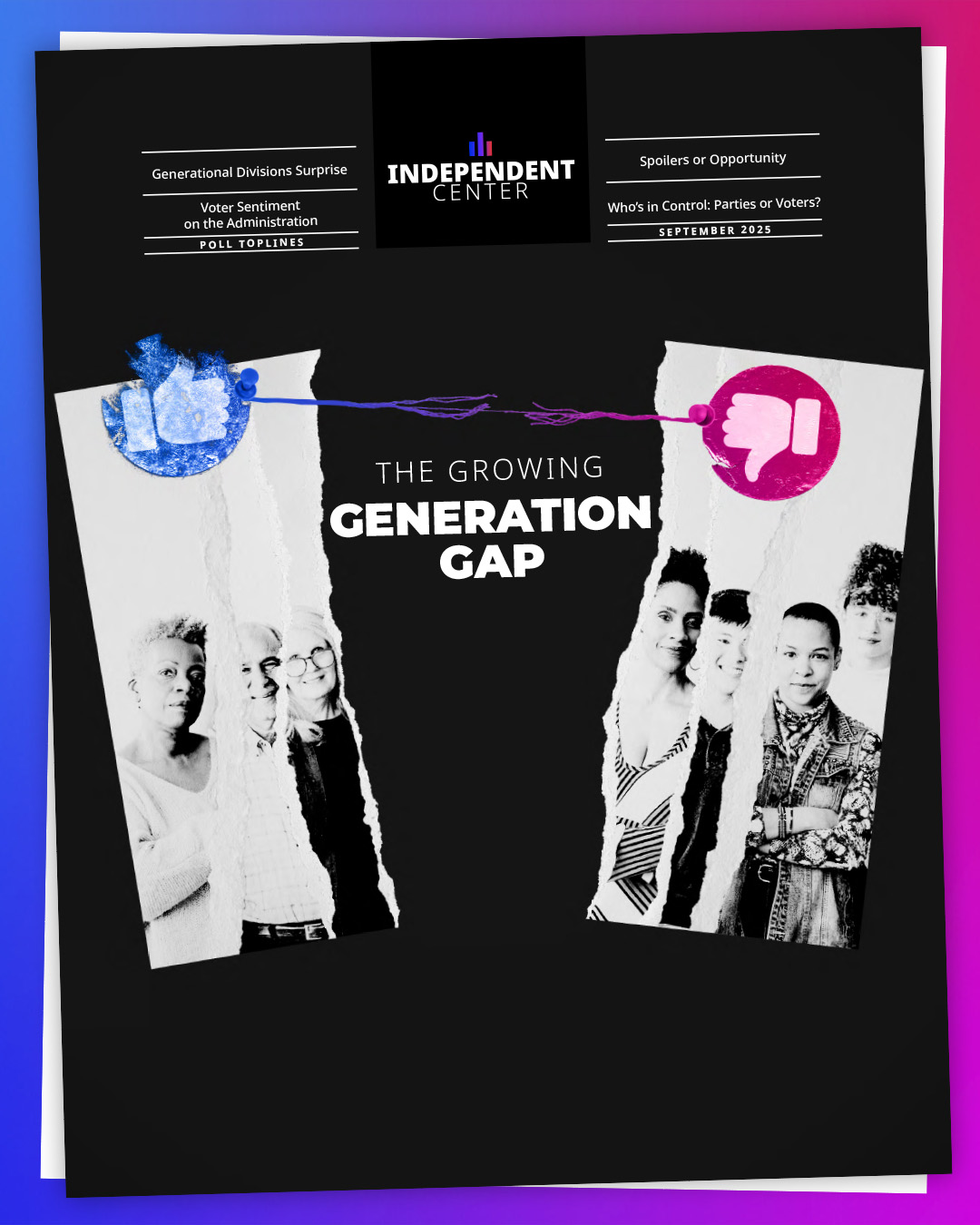As partisanship deepens and major parties fracture, independent voters are reshaping the political landscape.
The big picture
The biggest political trend of the 2024 election cycle wasn’t just the Republican sweep or the Democratic collapse—it was the surge in independent voter identification. More Americans are abandoning party labels and declaring themselves independent.
As former Colorado GOP chair Dick Wadhams put it in a recent Politico article:
“If the surge in unaffiliated voters continues, parties might become ‘bit players’ in the political landscape.”
This shift isn’t just theory—it’s backed by data. For the first time in modern history, more independents voted than Democrats in the 2024 election.
Beyond just voter turnout, online searches for independent political movements surged in the months leading up to the election:

As millennials replace Baby Boomers as the dominant electorate, expect independent identification to continue growing.
Zooming in
Can Republicans govern?
After sweeping the presidency, Senate, and House, the pressure is on for Republicans to deliver. Independent voters flipped to the GOP not just to reject Biden, but because they expected real action on:
- Inflation and affordability—not just cooling inflation, but actual price reductions.
- Federal spending and debt—audacious claims about cutting $2 trillion now face political reality.
However, Republicans have structural challenges:
- The smallest House majority since 1931 (ABC News)—making even basic governance difficult.
- GOP voters are deeply reliant on government programs like Social Security and Medicare, complicating any real attempt at spending cuts (Wall Street Journal).
Even Elon Musk and Vivek Ramaswamy—who championed the DOGE commission’s $2 trillion in cuts—are realizing the harsh reality of America’s structural spending problem (Politico).
Democrats’ identity crisis
Meanwhile, Democrats are struggling internally:
- Progressives suffered major defeats, even in liberal strongholds like California (Santa Maria Times).
- Centrist Democrats want safe streets, lower prices, and practical governance—but the progressive left is failing to meet those concerns.
Here come the independents
One clear winner from both parties’ internal dysfunction? The rise of the independent voter.
For years, independents were labeled as "leaners"—mushy middle voters who ultimately broke for one of the two parties. But our research proves otherwise.
Using AI-driven modeling, we discovered that independent voters have a higher degree of group cohesion than either Republicans or Democrats.

Data snapshot
- Independent voter turnout surpassed Democrats for the first time ever (CNN).
- Growing independent momentum in elections:
- Detroit’s Democratic mayor just announced a gubernatorial run as an independent (The Hill).
- Former GOP Rep. Denver Riggleman is considering an independent run for Virginia governor (Washington Post).
- Mainstream media is recognizing the problem—the New York Times ran a major feature on how the two-party system is failing (New York Times).
Independent lens
The rise of independent voters isn’t just a U.S. phenomenon—it’s happening globally:
- Germany’s right-wing AfD is surging (The Guardian).
- France’s left-wing is losing ground to Marine Le Pen’s nationalists (Independent Center).
- UK voters overwhelmingly rejected the ruling party in a landslide Labour victory.
- Argentina elected a libertarian president, Javier Milei, to cut government spending.
- Canada’s Liberal government is collapsing, with Trudeau resigning before the next election.
The message is clear: Voters worldwide are rejecting establishment parties.
Independents are now the plurality of U.S. voters—and their influence is growing. They hold the power to reshape American politics.
Subscribe to our newsletter for more insights into the independent movement.





